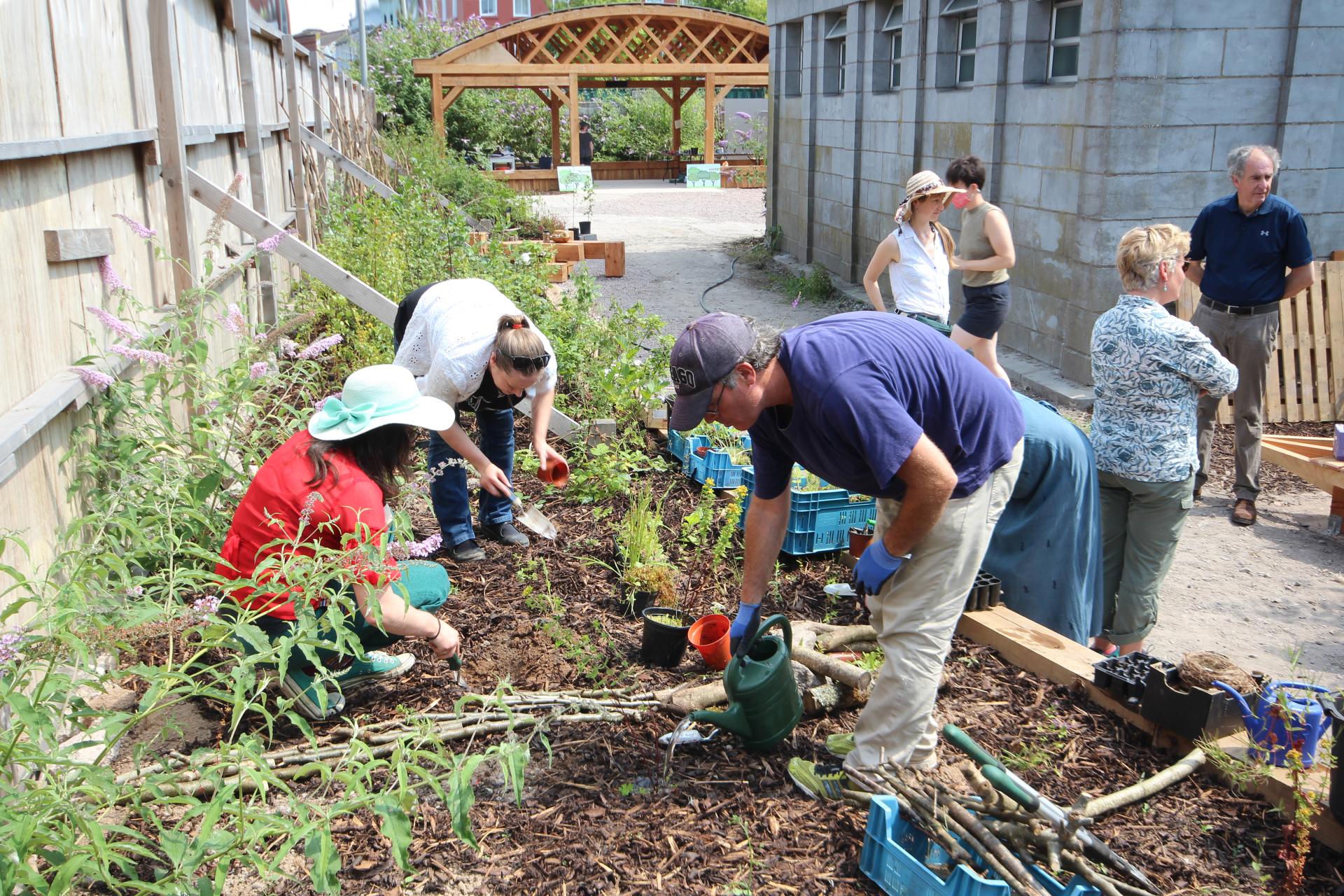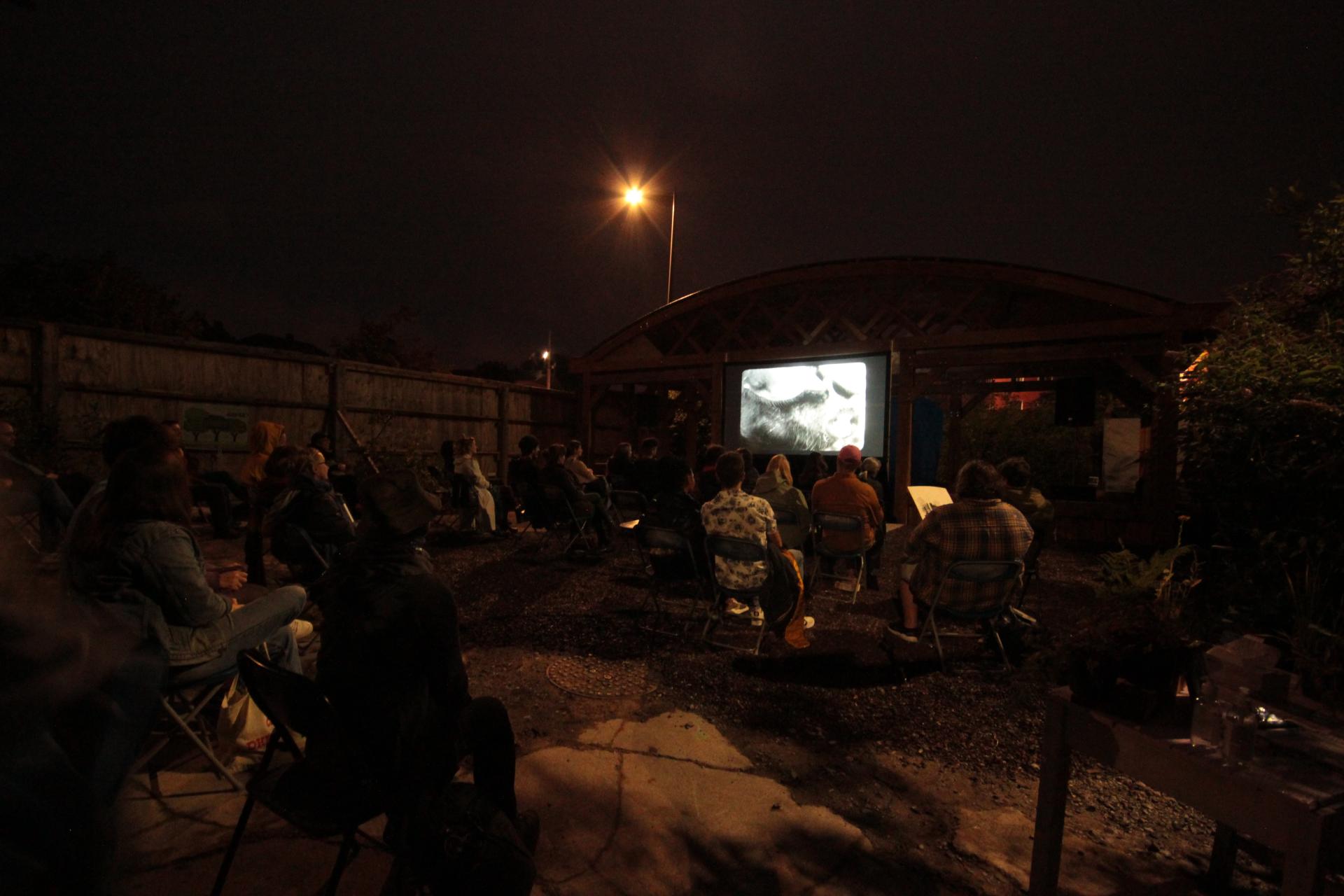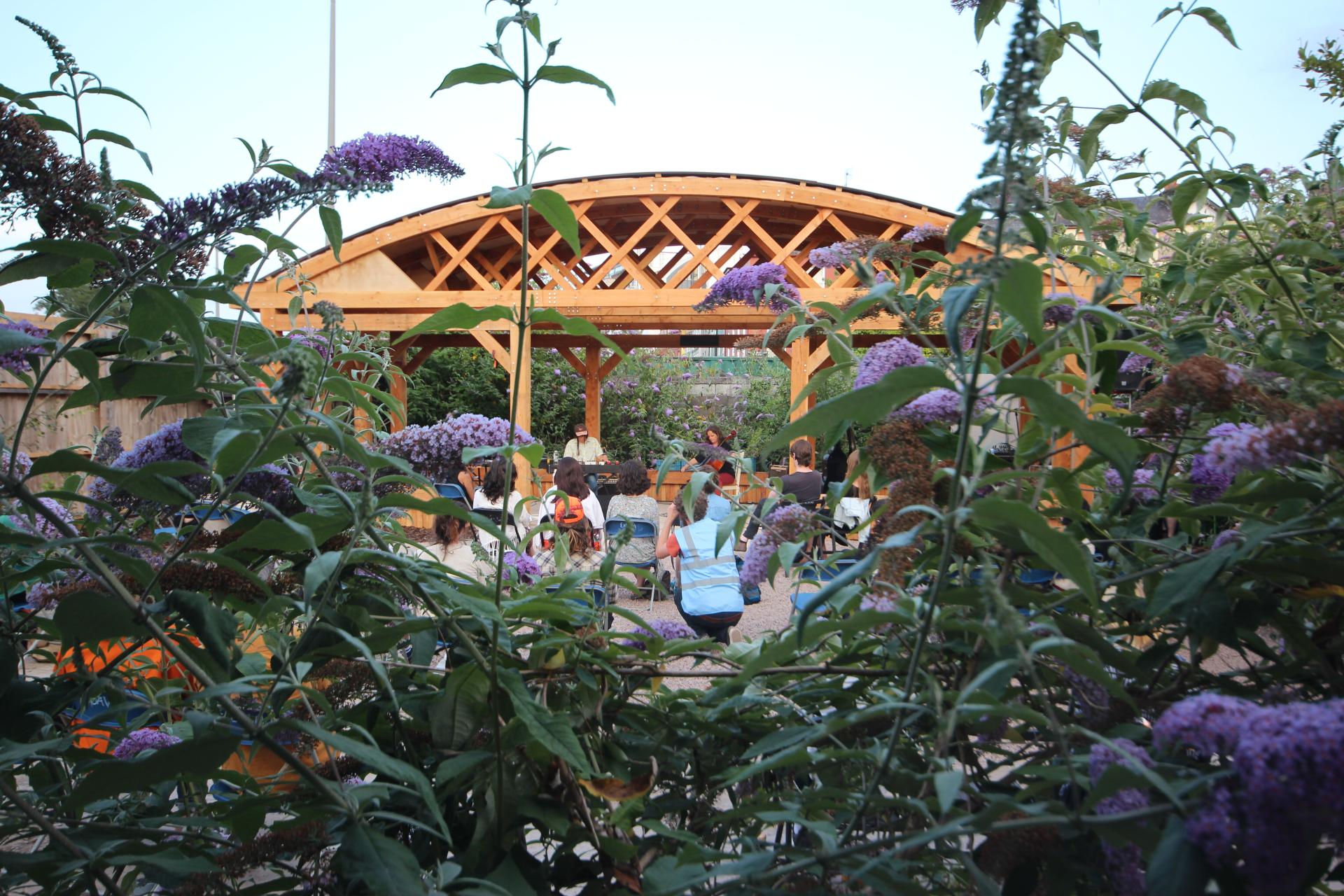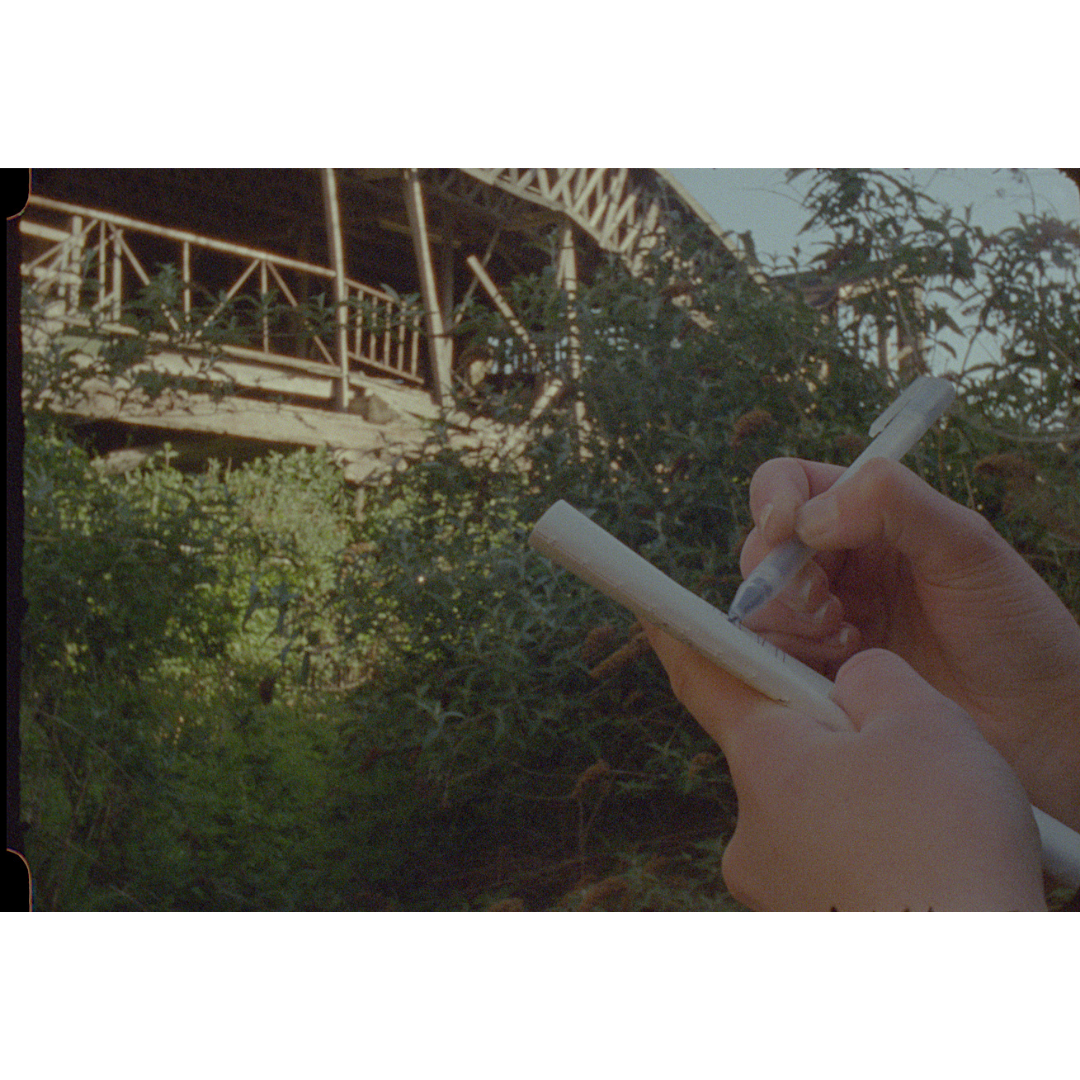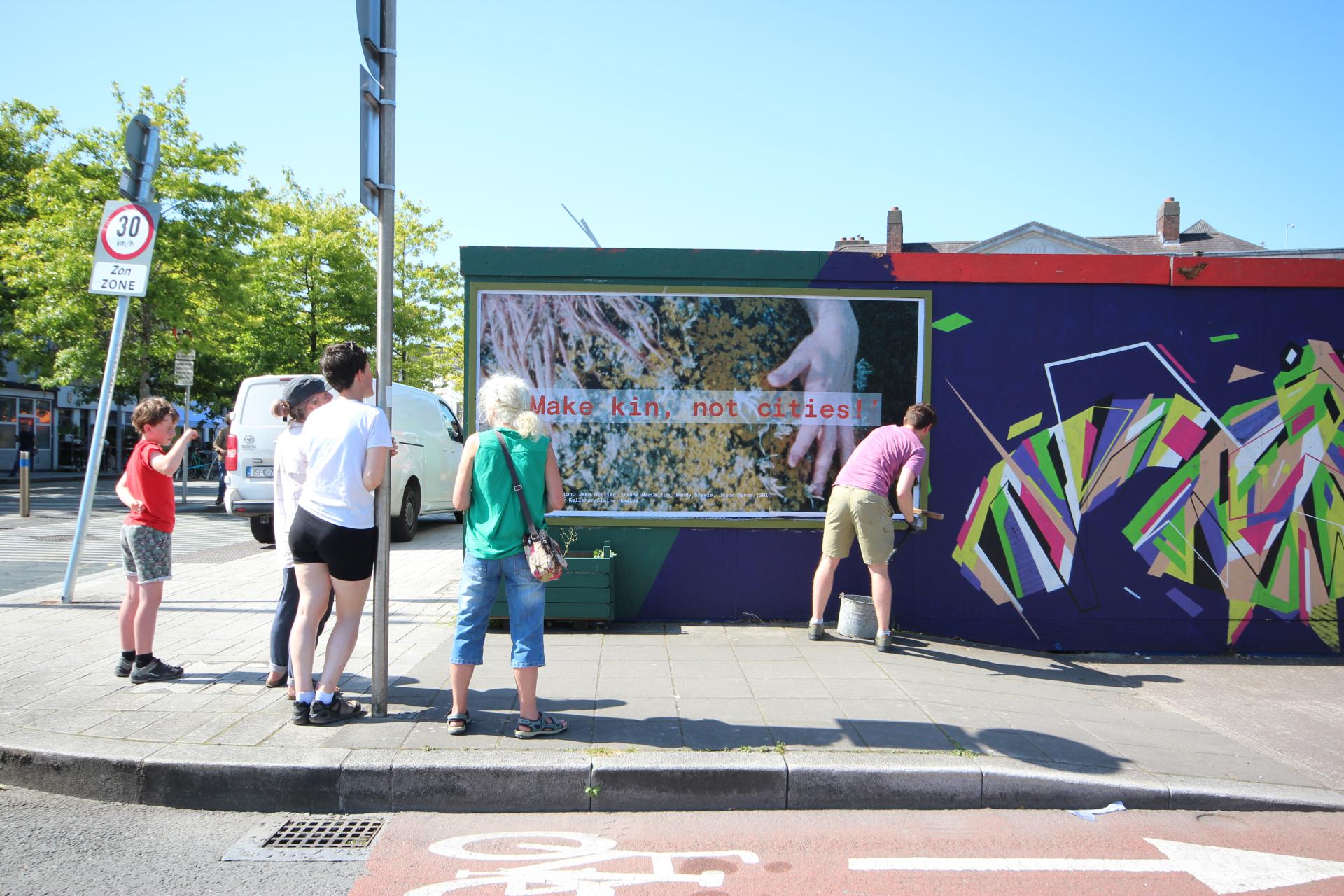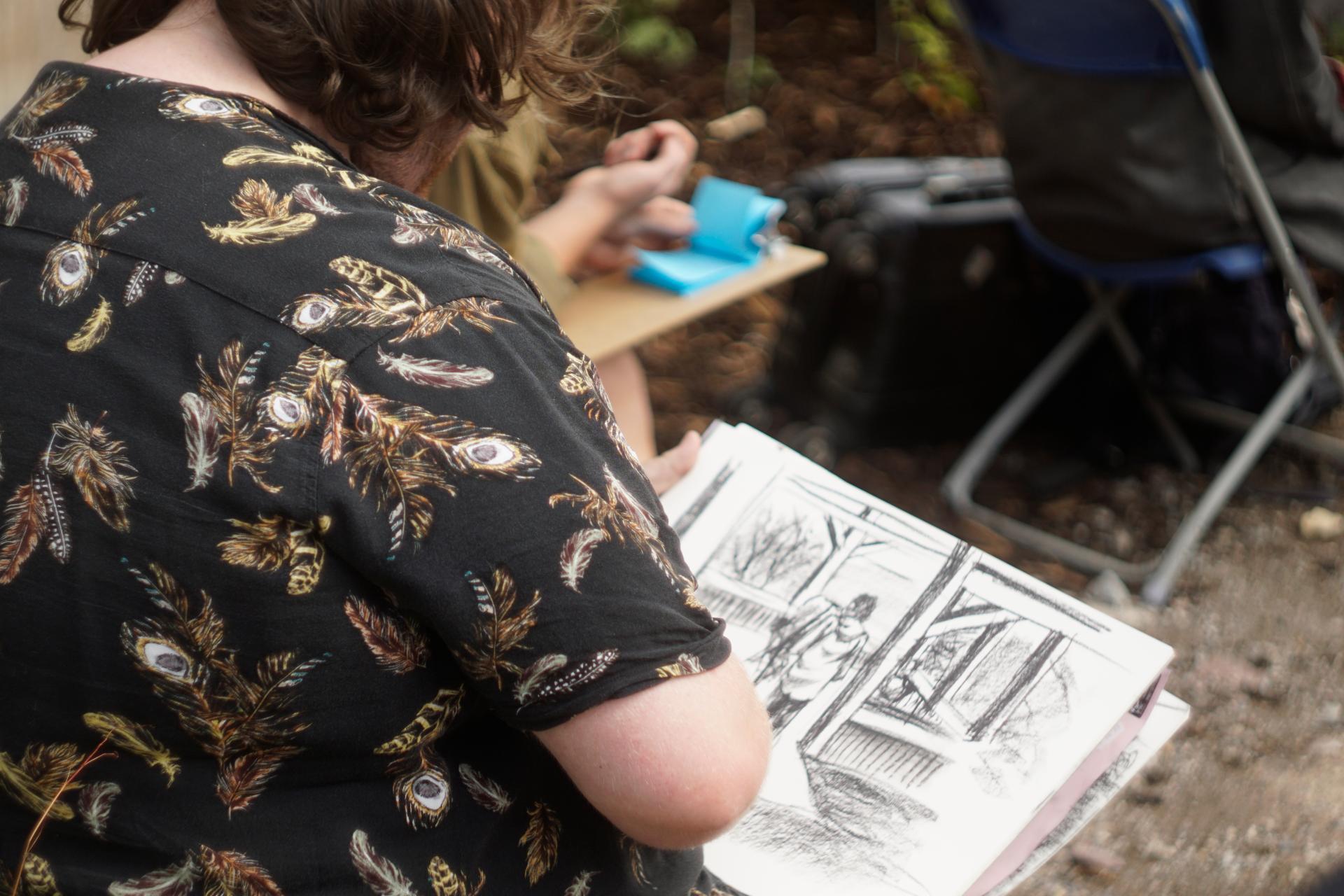TEST SITE
Basic information
Project Title
Full project title
Category
Project Description
TEST SITE is a collaborative, urban research project based on Kyrl’s Quay, Cork City, Ireland. Co-created by architect Ailbhe Cunningham + artist Aoife Desmond, the project works at the intersection of art, architecture and ecology. Engaging with natural and built heritage, the project uses site-specific architectural interventions, film/performance work, discursive talks and live events to regain a local sense of place - to respond to and reactivate a vacant ‘island’ site on Kyrl’s Quay.
Geographical Scope
Project Region
Urban or rural issues
Physical or other transformations
EU Programme or fund
Which funds
Description of the project
Summary
TEST SITE is a site specific project that responds to a derelict site on Kyrl's Quay, Cork City Centre, Ireland. Derived from the concept of a modern agora, TEST SITE is a collaborative art, architecture, and ecology project co-created by architect Ailbhe Cunningham and artist Aoife Desmond. This project offers a civic space for knowledge exchange and learning outside of the traditional four walls of an institution, an office, a classroom. To name but a few, architects, artists, business owners, council members, ecologists, geographers, herbalists, local residents, and students are engaged in this place - based exploration.
Kyrl’s Quay is a physical reference point for land without ‘use’ - a bustling ecosystem which is examined both as an urban resource and as itself. The treatment of the natural ecology of the site and the considered approach to the realisation of the build presents an opportunity for ‘knowledge in action’ where common phrases and ideas such as ‘working with nature’, ‘sustainability’, ‘zero waste’ ‘natural heritage’ and ‘the circular economy’ are worked in real application at a scale which allows for meaningful engagement that is creative while grounded in science and engineering.
Led by Ailbhe a circular principled pavilion on the ‘island’ site at Kyrl’s Quay, the result of collaborative design process. Concurrently Aoife created a 16mm film and a series of performances responding to the site and seasons.
In parallel with the application of artistic and architectural ideas on Kyrl’s Quay, a public engagement programme was curated during the Spring and Summer of 2021. This included seminar discussions, site responsive performances, live music gigs, workshops, artistic installations, walking tours, open days, youth forums, native species planting and habitat maintenance days, amongst others. The ownership of this place is shared with everyone who visits it – a shift from passive observation to active engagement is encouraged.
Key objectives for sustainability
TEST SITE exists as an exemplary social ecosystem on Kyrl’s Quay. It empowers the city inhabitants to experience, question and consider how to sustainably develop Cork City. The construction of the Pavilion at TEST SITE was strategic in vision. To provide a temporary home for public discussion around, and engagement with, the importance of high quality, regenerative design and placemaking. Therefor, it was considered essential that a circular ethos was applied and demonstrated throughout the design and construction of the pavilion. The temporary structure was designed with an intentional short use in order to optimise the Disassembly and Reassembly phases of the Procurement Process. This was achieved using Circular Economy Principles. The design reimagines the heritage Belfast Trusses of the neighbouring sawmills in a modern, nail free circular manner. An online materials passport is easily accessible to the public on the project website.
A Coill Bheag or ‘small, dense, biodiverse native woodland habitat’ of 300 trees was introduced to the island site as Kyrl’s Quay. An Choill Bheag was designed and delivered in collaboration with Hometree and An Taisce’s LEAF programme. Hometree “endeavours to deeply connect people with nature, and facilitates a wide variety of fundamental projects to address both Ireland’s declining biodiversity and the unfolding climate challenge.” An Tasice’s LEAF programme “encourages environmental education through awareness raising among students, teachers and the wider community.”
The Coill Bheag was introduced as an opportunity to learn together and experience first hand some of the key elements that are found in a native irish woodlands. In February 2022 the first 100 trees were permanently re - homed across two public sites in Cork City. The remaining 200 trees will continue to grow Kyrl’s Quay. As the trees mature and outgrow their temporary home additional permanent sites will be located around Cork City.
Key objectives for aesthetics and quality
TEST SITE’s aesthetic is situated in place. In collaboration with Silvabuild, ARUP and Meitheal Mara, TEST SITE architect Ailbhe Cunningham designed a wooden structure (pavilion) which is informed by the industrial heritage of an adjacent sawmill. The roof structure consists of a modern day adaptation of the Belfast Truss. Employed in the roof of the neighbouring sawmill, the roof truss was traditionally made up of glued and nailed lengths of wood. This modern interpretation avoids the necessity for glue / nails and depends entirely on hand cut joints and bolt fastenings. The celebration of the heritage of the neighbouring sawmill was paramount in the aesthetic qualities of the pavilion design.
Aoife’s 16mm film Mná and Sons is a celebration of the heritage - a blended factual and imagined documentary of place. Aoife’s work not only creates an aesthetic account of a place, it also questions the means of its production. Aoife explored experimental means of film development to reduce the environmental impact of her process.
The Coill Bheag or small native woodlands was installed as a temporary installation on site. While acknowledging the aesthetic impact of this installation it was ensured that a genuine, sustainable impact was achieved by ensuring that the plants are cared for an permanently relocated as they outgrow their space in the project.
The aesthetic treatment of the site was multifaceted, it was our intention to uncover the heritage wealth of the site, both built and ecological, while also ensuring the site was fully accessible and inclusive. As a result we responded to the natural and built fabric of the ground. We used the remnants of existing concrete floors to provide an uninterrupted, ramped access to all corners of the site while protecting the emergent ecology from our imposed increased foot fall. In this instance ensuring a balance between heritage and social regeneration.
Key objectives for inclusion
The pavilion was collaboratively designed with Meitheal Mara. This ensured that craftsmen and women engaged in upskilling schemes were afforded the opportunity to work with an architect and deliver a bespoke and heritage significance project. A design and build process was employed to empower all voices - an knowledge exchange of equality between the designer and the maker.
The hoarding on site is used as an information point - it reduces the sounds of the passing traffic and provides shelter from the wind. Using Deirdre Breen’s shapes and designs the TEST SITE team have installed a series of designs across the hoarding. Circular peep holes are cut out across the hoarding – each deliberately placed to provide a view through to a plant species growing inside the site.
Public Inspiration Panels (PIPs) installed in collaboration with local advertising agency Notes to Cork display information about and responses to Kyrl’s Quay and the TEST SITE project. The visual responses to the site displayed on the PIPS at various stages during the summer months provide another layer of engagement with place.
Accessibility is paramount component of the design - the space is wheelchair accessible and provides a sheltered space for sensory sensitive users.
Results in relation to category
Regaining a sense of place - Kyrl's Quay as a site is a home to living things, a history, a ruin, a story and a potential something else. Kyrl's Quay, until TEST SITE began was a forgotten place. This has been repeatedly acknowledged by the visitors to the project. One passer by recounted the last time he set foot on the site was as a firefighter to extinguish the blaze of a fire that broke out in the Philips building which occupied the site in the 1990s. Others recounted childhood memories of their visits to the sawmill to collect buckets of sawdust for their school floors on rainy days in the 70s and 80s.
Carefully uncovered during 'Meitheal' (community) maintenance days the traces of emergent ecology and remnants of built fabric of a place were uncovered. While the pavilion was being installed a walking tour series retraced the same path around Kyrl’s Quay from six different points of view - ecological, artistic, spatial, architectural and environmental they each layered a new narrative over the last. Again diversifying and intensifying the resignation of place.
The Pavilion was designed as a focal point through which attention would be drawn to the wealth of architectural and ecological heritage situated on and around Kyrl’s Quay. The project acts as a physical and theoretical meeting point for the inhabitants of Cork City. Both through the design, maintenance and installation phases all of the physical interventions on Kyrl's Quay were designed collaboratively, extending the sense of place.
TEST SITE hosted a workshop that engaged with the Draft Development plan for Cork City. This workshop afforded the public participants a renewed sense of involvement in how their city is developed. Facilitated by Rosie Lynch of Workhouse Union the workshop participants examined the documents that will form the policy from which this place, Cork City, will be developed for the coming years.
How Citizens benefit
Collaboration is a core and founding principle of TEST SITE. The project holds an openness to a wider sense of community and participation. Layers of heritages ecological, architectural and cultural informed the physical interventions onsite including the pavilion, seating and coill bheag installation. They also informed the feature length 16mm film, a performance series and curated public engagement programme. As urban citizens we can engage in diverse, trans - disciplinary explorations of place. TEST SITE is home to a democratic, public realm.
TEST SITE presents public space as a democratic environment for applied practice, applied theories. A public space to transition from a theoretical approach towards collaborative, applied design. The project acts as a form of narrative reclamation, how do we collectively retell the story of a site and its city? How do we regain a sense of belonging with the ultimate aim of Making Kin, Not Cities.
Each layer of activation and engagement allowed the public to participate regeneratively in this place through the lens of their choosing. The first public engagement programme was deliberately wide reaching and adopted a multifaceted and multi disciplinary approach. In order to maximise the engagement of the public with differing interests and points of view the public invitation was wide and varied.
The public engagement programme afforded visitors the opportunity to engage in a free programme of events. For the most part the events were ticketed but free. In this way ensuring that people were not excluded for socio economic reasons. The free events included a three part seminar series (topics - biodiversity, urban planning and architectural heritage), planting days, biodiversity education workshops, open days, music and dance performances, urban orienteering and collage workshops, a walking tour (archaeology, planning, architecture, ecology and participatory arts topics).
Physical or other transformations
Innovative character
The potential for TEST SITE project emerged during an Art + Environment making course led by artist Aoife Desmond. Six multi disciplinary artists, including Ailbhe Cunningham walked through and responded to the streets of Cork City. In the early site response days the group walked and documented through drawing, photography and writing. These creative, collaborative responses lent themselves to the container of a zine (a self published, informal magazine). Ailbhe Cunningham was one of this initial group and through this working relationship Aoife and Ailbhe discovered shared aesthetic sensibilities and concerns regarding design of public space. This small, temporal action afforded the artists the opportunity to collaborate and provided a sounding board through which fruitful artistic and strategic synergies formed. The larger project that they came to develop retained many of these initial sensibilities with collaboration a core principle and an openness to a wider sense of community and participation.
The zine group focused on R.H. Parker & Sons and the island site which Aoife and Ailbhe eventually secured permission from Cork City Council to use for the temporary project TEST SITE. Layers of heritages ecological, architectural and cultural informed the later physical interventions onsite including the pavilion, seating and coill bheag installation. They also informed a feature length 16mm film, a performance series and curated series of seminar discussions, workshops and music events.
The Art + Environment course was the Catalyst for the larger project that followed. The Zine was the lens through which the council engaged with the proposal and afforded Ailbhe and Aoife access to and use of the Karl’s Quay site. By employing alternative and cross disciplinary means of practice TEST SITE was able to emerge and exist outside of standard means of practice. Without these innovative means of creation, TEST SITE project would not have emerged.
Learning transferred to other parties
Aligned with the ethos of the project, the knowledge gained on Kyrl’s Quay is for collective use. The process that emerged and developed through TEST SITE continues to be shared amongst other projects and groups in Cork City. A visual archive (still and moving imagery) has been collated by the core project team. This is available, and shared with all interested third parties. An audio archive of has been collated. This includes recordings of the walking tour presentations, the seminar discussions and the feedback and evaluation session held with management and workshop team at Meitheal Mara (the community boat building yard).
In addition to the information freely available on the projects website and social media channels, Ailbhe and Aoife have delivered presentations to a wide reaching audience. To date these have included presentations to the University College Cork Architecture and Planning Departments, the Health Service of Ireland ‘Healthy Cities’ Initiative, The Cork Chamber of Commerce Sustainable Cities webinar series, The Irish Green Building Council of Ireland, The GMIT Letterfrack Ciruclar Economy in Urban Built Environment to name but a few. The findings of the project have been disseminated through publications such as Architecture Ireland (The Royal Institute of Architects of Ireland Monthly Journal), The Visual Artists of Ireland Magazine and Bloomers (Independent Art Publication). In September 2022 we will publish a book that will act as an information and support structure for participatory groups embarking on similar explorations. Aoife and Ailbhe have mentored students and peers alike throughout the process.
The experiences gained in relation to this site are applicable and transferable to the urban fabric of Cork City, to other cities and towns across Ireland and wider a field across Europe. The project is an exemplar in showcasing how a civic, inclusive space can foster meaningful engagement with vacant or under-utilised urban fabric.

